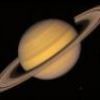 33
33arey!!
If charge on D is q also ans is kq/6a
if its -q then also kq/6a
and charge distribution for D=q
A=0
B=q
C=-7q/4
D=q
If charge on D=-q
then A=0
B=q
C=-q/4
D=-q ..(same as deepanshu..)
 62
62let the charge on inner surface of B be x
outer one is q-x
inner surface of C will have -q charge
outersurface will have "y" charge
Inner surface of D will have -y charge
outer wil lhave -y+q
now you guys try
 1
1Consider a sphere(conducting) of radius R.
It has charge Q , suppose.
Consider a concentric sphere of radius r(r<R) and apply gauss's law.
Net flux through this is zero. This is true for any value of x.
So, if we place a concentric conducting sphere of some radius x(<R),
net flux through it is zero, and hence no charge induced!!!
As far as electric field lines are concerned, the field lines of the outer spheres will radiate outwards, and not inwards, and hence no field line initiated from an outer sphere can cut an inner one. (It is well known that the field inside a conductor is zero.)
Is there any flaw in my argument. If so, please point out.
[NOTE:- by the word "sphere", I meant "conducting sphere".]
 1
1yes you are right..
and i am also getting the answer kq/6a
 13
13even i m getting Kq/6a
my charge distribution was ...
D = -q
C = -q/4
B = q
A = 0
 33
33shitt!! on mani's request :D :D
I took D=q
phir se dekhte hain...
 11
11@priyam
I REQUEST U NOT TO SHIT IN THE FORUMS
 1
1my answer is 2kq'/3a + kq/6a... whr q' is d charge on innermost shell A...!!!
btw... v can't say dat no charge exists on inner shell A rite... an induced charge will b distributed over d outer surface of A, if i'm not wrong...!!!
 13
13no ..... no charge on inner sphere..
 33
33q'=zero...
from where the charge comes to A..it is isolated.. so charge is conserved...
 1
1hmmm... kk... i got it...
actually i was mislead by a question in dc.pandey... tried to apply dat procedure here... but, now i'm clear... thanq...
 1
1yep i did some calculation mistake [asalways!] dats y got -q/4 on inner shell initially.....
wat about method in #8 ? .. without this induced charge thing.......
 1
1There is no need to find the cxharge distribution.
One must note that, potential difference between A and C is equal to the work done per unit charge in taking it from A to C without changing its Kinetic Energy.
Let me denote work done per unit test xcharge to take it from X to Y
as W(X,Y)
So, W(A,C)= W(A,B) +W(B,C)
There is no field between A and B.
So W(A,B) = 0
The only field between B and C is that due to the charge on B.
So, W(B,C)= kq{ (1/2a) - (1/3a)} = kq/6a.
 62
62OOPS>>> >
why will there be no charge on shell C?
In fact on the inner surface there will be a charge equal to -(q+q')
because net charge enclosed should be zero for potential to be zero
 1
1din solve so cud be wrong..
 1
1me too get this bt ans is sumthing else
 1
1well then there's a lengthy process..
i thot this shortcut wud work...
charge distribution:
A= q'
B[inside] = -q'
B[outside] = q+q'
C= nothing
D= -q
now find pot due to each charge at C...
this shud be zero as it is grounded.
then u wil get value of q'.
from there u can calculate pot at A.
hence find Va-Vc.
 1
1i did the same n got kq/6a
 1
1well .... then wats the ans...
last time i replied in post 2.. then i had used a shortcut n got that ans..
simply find Va .. which is kq/2a-kq/4a
and Vc= kq/3a -kq/4a
so Va- Vc = kq/6a..
btw, wats the ans ??
 1
1ans given is kq/4a bt i did nt find any mistke in our method
 1
1wat is the value of q' you got ?
 1
1i dunno wat made me take it zero...
 1
1i got the charge ona as -q/4